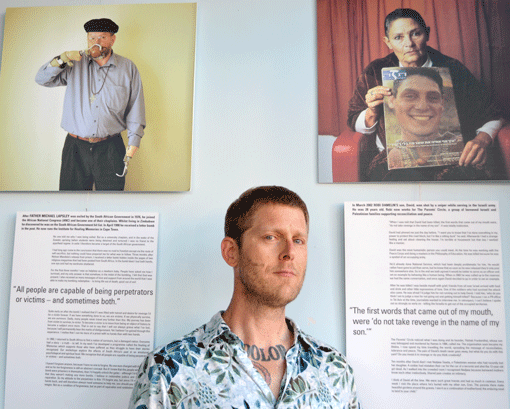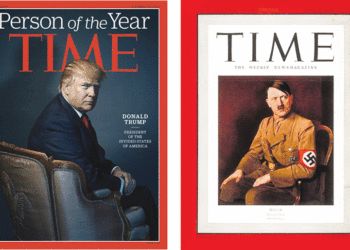Arno Michaelis, a former racist skinhead, could not keep track of the press interviews he had done in recent days. He was quoted in an Aug. 7 New York Times story about white power music — the genre called “hatecore.” Last week, CNN aired a story about Michaelis, who has reformed his racist, hell-raising ways, and formed an organization called Life After Hate, in order to help others leave lives mired in swastikas and physical aggression.
I talked with Michaelis last Friday afternoon, at the Blue Ox Coffee Company, in south Minneapolis. We sat at a table for an interview that stretched on for more than an hour. The backdrop to the conversation was the Aug. 5 mass murder at the Sikh temple in Oak Creek, Wisc. The shooter, Wade Page, who murdered six Sikh worshipers before killing himself, was a member of a white power band. Michaelis said that he never met Page; but he worries that he might have been an influence on Page’s trajectory through racial hatred.
Tall, wiry with plenty of tattoos on his arms and torso, Michaelis talked about his former life, when booze helped fuel his anger, which he vented by going out on the streets of Milwaukee with his “crew” of fellow racists and attacking strangers. At his worst, he says that he beat someone and left him for dead.
Michaelis drifted into the punk rock music scene as a teenager; but when he heard the songs of white power bands something clicked, as far as finding a more hateful and repellent outlet for his aggression. He mentions a girl who had visited Chicago and met a charismatic leader of the National Socialists — young neo-Nazis. She returned to Milwaukee, in her new racist skinhead garb, and turned Michaelis on to the music of the British band Skrewdriver. He ended up forming his “first skinhead band, which was called One Way,” in 1987.

In our interview, Michaelis didn’t want the names of his bands, or other groups, to be publicized, lest somebody might look them up on YouTube and come under their sway. However, Jewish World readers are not likely to be attracted to this ugly, anti-Semitic kind of music; and the New York Times story mentioned that Michaelis was the frontman for Centurion, which had something of a white power hit.
The former racist skinhead still has the deep raspy voice that he used onstage years ago, when he was trying to excite the kids to take up arms in a racial war, to participate in his twisted program of hatred against Jews and non-whites.
(As a teenager, Michaelis recalled that he was brought up short at the Thanksgiving dinner table by his mother, who responded to his drunken racist screed: “Well, Mr. Nazi, did you know that you’re one-sixteenth Indian?”)
Hatecore served as a portal for recruitment into the racist skinhead movement. Michaelis enlarged his “skinhead crew” from the ranks of “white kids who were minorities in their high school… white kids who got beat up because they were white. So, they already had an axe to grind racially, and then they’d see us at a punk show, and we were singing about how great it is to be white, and how we were going to fight for white people; and that was exactly what they wanted to hear.”
Recalling his early days in the white power music scene, Michaelis said, “I could scream real loud and get people crazy… I was also good at writing lyrics.”
Michaelis said that his crew, the group around One Way, grew from 10 to 50 in a year.
In 1992, Michaelis formed Centurion. The band’s CD, 14 Words, sold 20,000 copies around the world, according to the New York Times.
Asked if he had identified as neo-Nazi, Michaelis responded that he met older neo-Nazis, who “dress like SS officers, they look like [characters from the TV show] Hogan’s Heroes, they got armbands and everything.” But Michaelis said that he and his mates were “white power skinheads… We still had an affinity for swastikas, we had swastikas on our jackets, we had swastika tattoos.”
Michaelis also pointed out that his paternal “Teutonic heritage,” or Prussian history, played a role in his identifying with Hitler and the Nazis. He bought into the ideology that asserted that there was a “shadowy worldwide Jewish conspiracy to wage genocide against the white race.” This Jewish conspiracy supposedly controlled all levers of power in society, including the police and military forces. The white supremacists referred to this state of affairs as “ZOG, the Zionist Occupational Government,” according to Michaelis.
He now admits that he had everything “ass-backwards,” but for a time, “as I became more intellectual about my racism — I prefer that the name of this organization not be included [in the story] — I later became a reverend in the Church of the Creator,” which disseminated literature about the perfidious Jews, who ostensibly were responsible for the “fall of the Roman empire, via Christianity, which was a part of the Jewish program against white people. Christianity was [the Jews’] greatest weapon because it taught white people to love their enemy and to turn the other cheek,” Michaelis explains about the pagan hate group.
Listening to this insane stuff, I had to take a big slug of lemonade and remind myself that Michaelis no longer was a partisan of the group whose members screamed “RaHoWa” (Racial Holy War).
In the way of background, the ADL kept tabs on the World Church of the Creator, which it called “one of the fastest-growing hate groups in the 1990s.” This “church” spawned some violent acolytes, such as Benjamin “August” Smith, whose shooting spree in Illinois and Indiana, during the Fourth of July weekend in 1999, left two dead and nine wounded. Smith then fatally shot himself.
Finally, after one of his close friends was shot to death, Michaelis began to distance himself from the white power movement. At 24, he had become the custodial parent of his daughter (who happened to be with him at the café in Minneapolis). He realized that unless he changed his ways, the violence would take him away from his daughter.
Although he is now 41, and 17 years away from his racist skinhead days, Michaelis is still processing his violent racist past. The New York Times mentioned that he received a call in 2005 from a German neo-Nazi who wanted him to reunite Centurion for a European tour. That surprising blast from his troubled past prompted Michaelis to form the group Life After Hate, which promotes “peace and compassion.”
Which brings us back to the carnage at the Sikh temple. Michaelis thinks that Wade Page did not necessarily know who his victims were — “that they’re not Muslims,” if that was whom he intended to target.
“His ex-girlfriend worked like a block down the street from the temple,” Michaelis offers. “I think, to him, the Sikh community was just the closest symbol of everything he believed was wrong with the world.”
Perhaps the Sikh, a miniscule religious minority in this country, represented the “other” to Page, who emerged from his military service as a proponent of white power.
On the heels of the mass murder at a movie theater in Aurora, Colo., the shooting at the Sikh temple in Wisconsin gave us a sense of society spinning out of control. Sometime in that span of time, one of my neighbors was robbed at gunpoint late at night after returning from work — on our quiet block in south Minneapolis. This country is awash in guns, and gun crimes are taking a deadly toll in the streets.
“We’ve got to put an end to this kind of senseless violence, whether it’s in Aurora, whether it’s in Oak Creek, whether it’s in Tucson, whether it’s in cities all across America where too many lives are cut short,” President Obama said last week in Denver. “As one American family, we’re going to have to come together and look at all the approaches that we can take to try to bring an end to it.”
How do we do that?
Arno Michaelis says that anyone who “is touched by this story… can address this kind of violence starting this minute. And they can do that by practicing kindness themselves. They can do that by engaging with the world around them and opening themselves up to different cultures, and treating people with kindness, especially if they don’t deserve it.”
When he was a practicing violent skinhead, there were people who treated Michaelis with kindness. A grandmotherly black woman working the counter at a McDonald’s saw the swastika tattoo on the back of his middle finger and dispensed some advice with his Big Mac: “I know you’re a better person than that. That’s not who you are.”
Michaelis says that, 20 years later, he has not forgotten that moment. He also tells about being hired for a minimum-wage job in a silk screening factory, where the kindly Jewish owner overlooked his swastika patches and tattoos, and saw some redeeming human value beneath the unappealing surface.
Such experiences “planted a seed” within him, Michaelis says, “which grew to displace the hatred… Those acts of kindness stayed with me and made it more and more difficult to practice the hate necessary to hurt people.”
(The AJW interview with Arno Michaelis was arranged by Louisa Hext, who organized the exhibition The F Word: Images of Forgiveness, which is on view through the end of August at Blue Ox Coffee Company, 3740 Chicago Ave. S., Minneapolis. The F Word is a provocative collection of photographs and personal narratives “exploring forgiveness in the face of atrocity.” For information, go to: theforgivenessproject.com.)
— Mordecai Specktor / editor [at] ajwnews.com
(American Jewish World, 8.17.12)


















